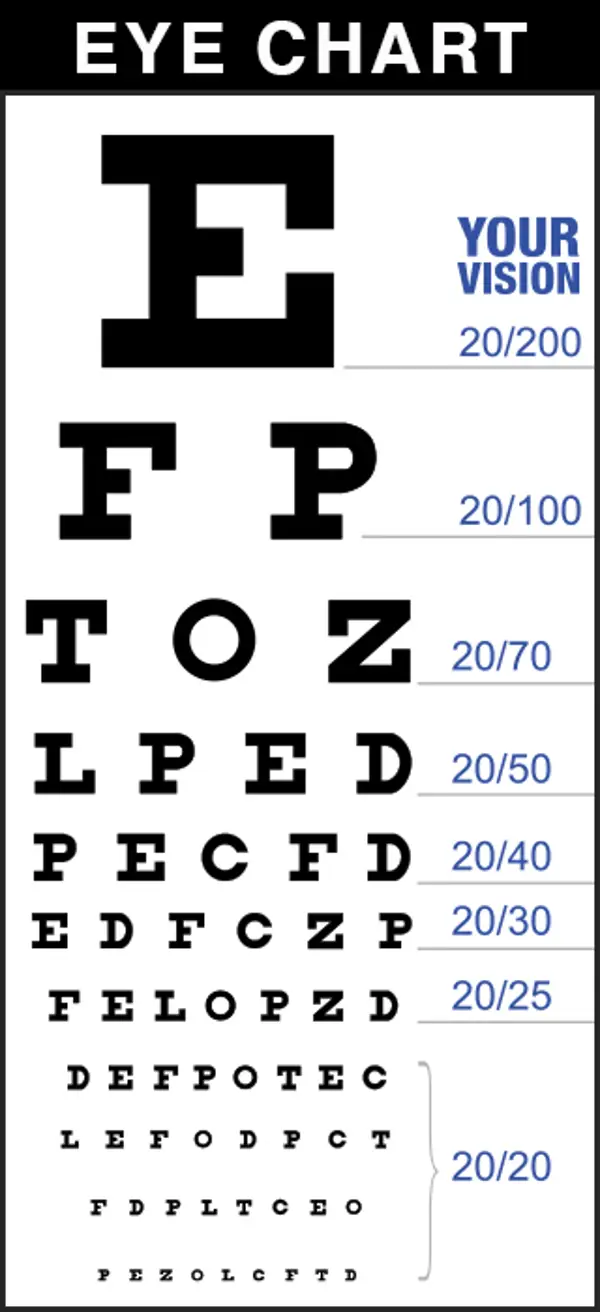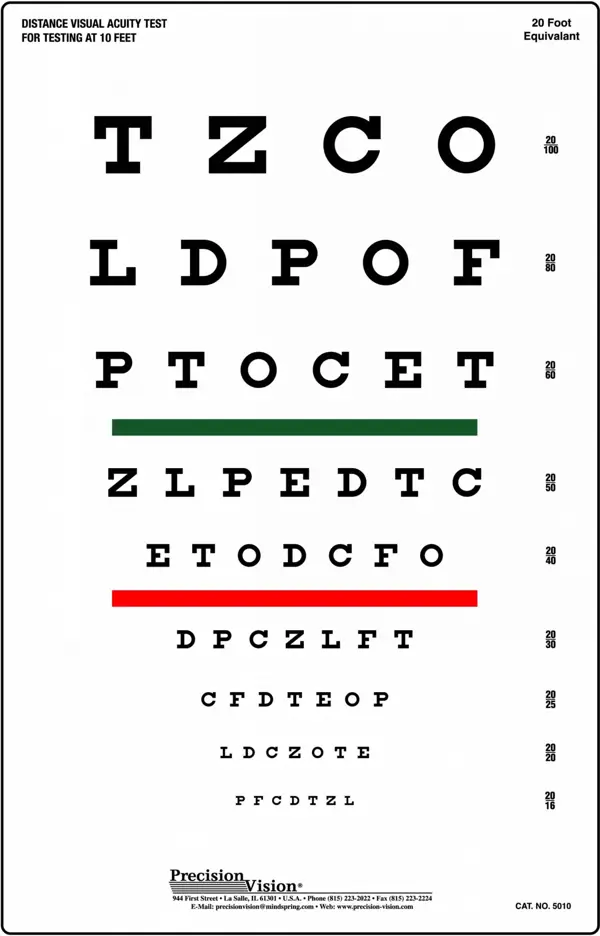Table of Contents
- Introduction
- Testing Procedures
- Interpreting Results
- Implications for Vision Health
- Common Issues
- Prevention and Treatment
- Conclusion
Introduction
The near visual acuity test is a standard assessment used to measure the ability to see clearly at close distances. This test is essential for diagnosing and monitoring various vision conditions, such as presbyopia, myopia, and hyperopia.
Testing Procedures
The near visual acuity test involves reading letters or symbols on a chart placed at a specific distance from the individual. The results are recorded as a fraction, with the top number representing the distance at which the test was performed and the bottom number indicating the smallest line of text that can be read accurately.
When conducting a near visual acuity test, it is important to follow a standardized procedure to ensure accurate results. The following steps should be taken:
- Ensure the testing area is well-lit and free from distractions.
- Instruct the individual to cover one eye with their hand or an eye patch.
- Have the individual sit at the appropriate distance from the eye chart (usually around 16 inches for near visual acuity testing).
- Ask the individual to read aloud the smallest line of text they can see clearly on the eye chart.
- Record the results in terms of the individual's ability to read the specific line (e.g. 20/20 vision, 20/40 vision, etc.).
- Repeat the test with the other eye covered to determine near visual acuity in that eye.
- If necessary, use corrective lenses during the test to determine the individual's best-corrected near visual acuity.
Following these testing procedures will help to ensure accurate and reliable near visual acuity test results.

Interpreting Results
Interpreting near visual acuity test results requires a trained eye and an understanding of normal vision standards. Optometrists and ophthalmologists use these results to determine the appropriate corrective lenses or treatments for their patients.
When receiving the results of a near visual acuity test, it is important to understand what the numbers mean in terms of your vision. Near visual acuity is a measurement of how well you can see up close, typically within arm's length.
Interpreting the Numbers:
- 20/20: This is considered normal near vision. You are able to see at 20 feet what a person with normal vision can see at 20 feet.
- 20/30: This means that you can see at 20 feet what a person with normal vision can see at 30 feet. Your near vision is slightly impaired.
- 20/40: This indicates that you can see at 20 feet what a person with normal vision can see at 40 feet. Your near vision is significantly impaired.
- Below 20/40: If your near visual acuity is below 20/40, you may have difficulty with everyday tasks that require close-up vision, such as reading or sewing.
It is important to consult with an eye care professional if you have concerns about your near visual acuity test results. They can help determine the best course of action to address any vision issues you may have.

Implications for Vision Health
Abnormal near visual acuity test results can indicate underlying vision problems that may require intervention. Regular testing and monitoring of near visual acuity are crucial for maintaining healthy vision and preventing vision deterioration.
Near visual acuity tests are important for assessing how well individuals can see up close. The results of these tests can have various implications for vision health:
- Poor near visual acuity may indicate the presence of refractive errors such as myopia (nearsightedness) or presbyopia (age-related farsightedness).
- Unaddressed refractive errors can lead to eye strain, headaches, and difficulty performing tasks that require close vision, such as reading or using electronic devices.
- Regular near visual acuity testing is crucial for early detection and management of vision problems, which can help prevent further deterioration of eyesight.
- Improving near visual acuity through prescription glasses, contact lenses, or vision therapy can enhance quality of life and overall visual comfort.
It is recommended to consult an eye care professional for a comprehensive eye examination if you experience changes in near visual acuity or other vision problems.

Common Issues
Common issues that may affect near visual acuity test results include refractive errors, eye diseases, and aging-related changes in the eyes. Early detection and management of these issues are essential for preserving visual acuity.
When conducting a near visual acuity test, there are several common issues that can affect the accuracy of the results:
- Incorrectly calibrated equipment
- Poor lighting conditions
- Incorrect test distance
- Uncorrected refractive errors
- Inadequate patient cooperation
It is important to address these issues in order to ensure the most accurate near visual acuity test results possible. Proper equipment calibration, appropriate lighting, correct test distances, and patient cooperation are key factors in obtaining reliable measurements.

Prevention and Treatment
Prevention and treatment of vision issues that affect near visual acuity include wearing appropriate corrective lenses, practicing good eye hygiene, and scheduling regular eye exams. In some cases, surgical interventions may be necessary to improve vision.
It is important to regularly check and monitor your near visual acuity test results to ensure optimal eye health. Here are some tips for prevention and treatment:
- Have regular eye exams with an optometrist or ophthalmologist to detect any changes in your near vision.
- Protect your eyes from harmful UV rays by wearing sunglasses when outdoors.
- Follow a healthy diet rich in nutrients that support eye health, such as vitamin A and omega-3 fatty acids.
- Avoid prolonged periods of screen time and take breaks to rest your eyes.
- If you notice any changes in your near visual acuity test results, consult with your eye care professional for further evaluation and treatment options.

Conclusion
The near visual acuity test is a valuable tool for assessing and monitoring vision health. By understanding the intricacies of test results and taking proactive steps to maintain healthy vision, individuals can preserve their visual acuity and enjoy clear eyesight for years to come.
Key Takeaways
- Regular near visual acuity testing is essential for maintaining healthy vision.
- Abnormal test results may indicate underlying vision problems that require intervention.
- Preventive measures, such as wearing corrective lenses and scheduling regular eye exams, can help preserve visual acuity.
FAQ
Q: How often should I have my near visual acuity tested?
A: It is recommended to have your near visual acuity tested at least once a year, or as advised by your eye care provider.
Q: Can near visual acuity be improved with treatment?
A: Depending on the underlying cause of vision issues, near visual acuity can often be improved with corrective lenses, surgery, or other treatments recommended by an eye care professional.



Recent Comments